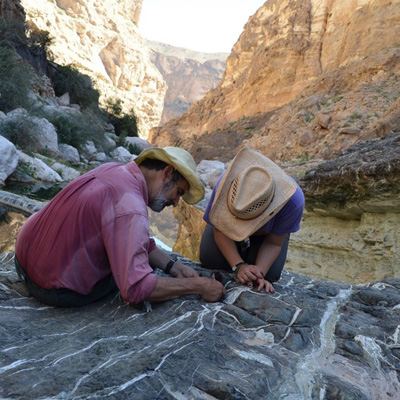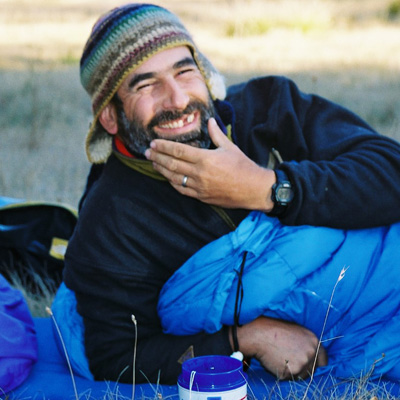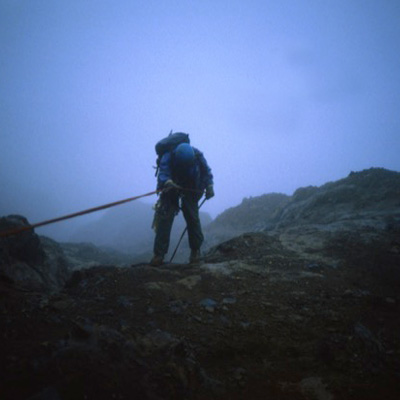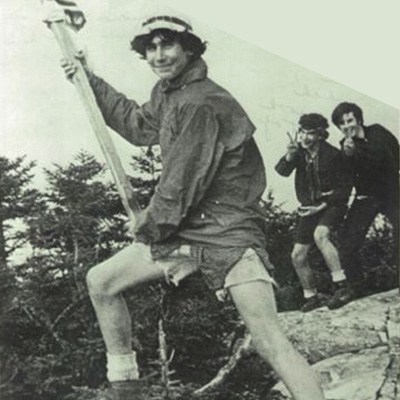Peter B. Kelemen
Columbia University
Citation
Peter Kelemen has integrated geologic observations with geochemistry, geophysics, thermodynamics and continuum mechanics to reveal unexpected links between the dynamics and evolution of Earth’s crust and upper mantle and unveil a geological solution to carbon sequestration. Kelemen’s discoveries are sparked by geologic observations. Early on, dunites caught his eye. He saw them as channels through which large volumes of melt had flowed — and reacted. With a quantitative understanding of how they form, he and his colleagues discovered that the formation of melt channels could explain the composition of mid-ocean ridge basalts, the interpretation of U-series disequilibria and strain localization in the mantle. Kelemen’s ideas regarding melt-rock reaction also provided a possible explanation for why the continental crust is andesitic while most primitive melts are basaltic. While melt-rock reaction is a viable hypothesis for the genesis of some continental rock formed at arcs, he realized that the spectrum of crustal formation mechanisms must include those involving primitive basalts. This led him and his colleagues to explore the role of convective instability of lower crust and diapiric upwelling from slabs. His calculations inspired the community to pursue new field work, geochemical analyses and thermodynamic calculations. He took a similar path to invoke a novel model for the formation of oceanic crust at fast spreading centers, inspired by observations of “sill-like” gabbro layers in the Oman ophiolite. He demonstrated that these sills are geochemically isolated, which led to the bold hypothesis that the entire lower crust formed by the injection of sills. Crustal genesis by sill formation remains a leading hypothesis, largely as a result of Kelemen’s innovative work integrating geophysics, thermomechanical models, fabric analyses and cooling rates. While in Oman, Kelemen became fascinated by remarkable structures in sets of carbonate veins. These observations motivated a multidisciplinary analysis of the carbonation process and an assessment of how much carbon dioxide (CO2 ) the ophiolite sucks out of the atmosphere today; he realized that with a bit of geoengineering, ophiolite bodies around the world could provide a meaningful CO2 sink. A hallmark of Kelemen’s work is how he integrates ideas from a broad range of fields, guided by his keen geologic intuition, to relentlessly investigate problems in Earth science. A second hallmark, a willingness to take scientific risks, shows how science can progress in more than incremental steps; as an exemplary recipient of the 2021 Hess Medal, he would make Hess proud.
— Greg Hirth Brown University Providence, Rhode Island
— Peter Molnar University of Colorado Boulder Boulder, Colorado
Response
I thank Greg Hirth and Peter Molnar for their generous words. Honorees always say they couldn’t have succeeded without help. I don’t like predictable phrases, but this is particularly true in my case. I never had the training to address many problems we investigated, I forgot most of the training I had, and I only arrived here because friends were willing to indulge my naive insistence that “there must be a way to make this work” and then help me find it.
Driven by vague ideas about the origin of continental crust, I stumbled into fantastic training in petrology from Bernard Evans and Stu McCallum. I was doubly lucky to find Mark Ghiorso, who had the tools to quantify melt/rock reaction. Jack Whitehead was a role model for understanding feedback in geodynamics and the courage to take simple approaches to complex problems. Greg Hirth was my “second Ph.D. adviser,” teaching me all I know about rock mechanics. We set out to understand melt transport, then viscous earthquakes, shouting back and forth through the ceiling of adjacent offices. My shouts were questions. Greg’s were answers. Marc Spielgelman brought our notions to life in numerical models. Students and postdocs, especially Einat Aharonov, Jun Korenaga, Stefan Bernstein, Karen Hanghøj, Matthew Jull, Mark Behn, Lisa Falk, Juan Carlos de Obeso, Noah McQueen, Jill VanTongeren and James Leong, made exceptional, original contributions. Stan Hart and Al Hofmann were generous mentors, Brad Hacker and Craig Manning, supercollaborators.
Long ago, freaked out by predicted resource crises, I asked Half Zantop at Dartmouth what to do. He replied, “Focus on geology. Maybe, when you’re 50, you can have a broader impact.” That’s kind of what happened. Years of basic geoscience yielded tools for applied research. The Endless Frontier meets Limits to Growth. As Dihedral Exploration, Geoff Radford and I did “extreme-terrain mineral exploration,” taking big risks for low pay in projects that transcended the notion of a job. I still feel our research is more important than our jobs. Moreover, mineral exploration does not take no for an answer. If you can’t find it here, look over there. . . . There must be a way to make this work.
Stepping back, I thank Rachel Cox. Along the way, there’s been too much deferred gratification, especially for Rachel. It’s been fantastic, and the climate crisis looms, but it’s time for us to slow down and enjoy each day together.
— Peter B. Kelemen
Columbia University
New York, New York
Field Photos





